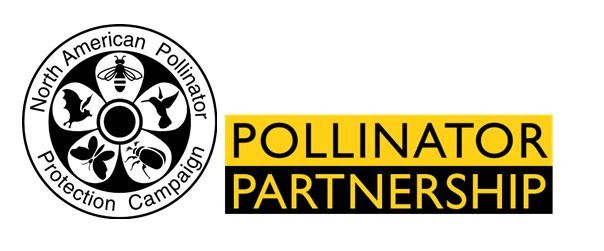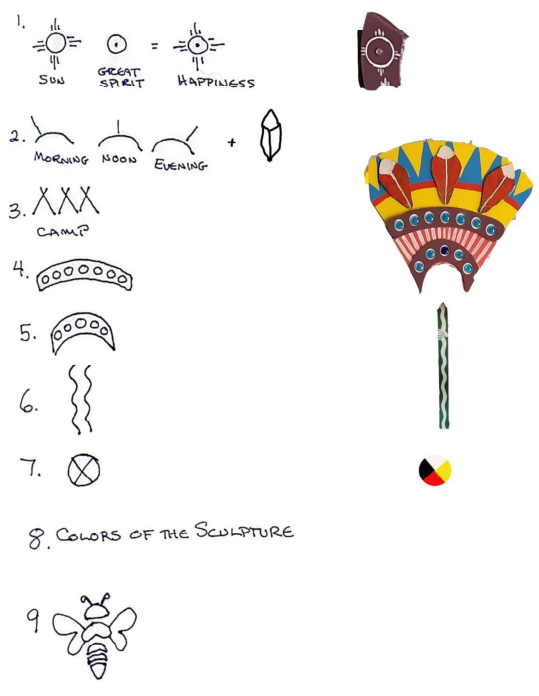Pollinator Garden
Plant List
| Common Name | Scientific name | Attracts |
|---|---|---|
| Abelia | Abelia x grandiflora | Bees, Butterflies |
| Aster | Aster | Butterflies, Bees |
| Autumn Joy Sedum | Hylotelephium Herbstfreude | All Pollinators |
| BeeBalm | Monarda | Bees, Butterflies |
| Black & Blue Salvia Anise-scented Sage | Salvia guaranitica | Butterflies, hummingbirds |
| Black-eyed Susan | Rudbekia | Burds, Butterflies |
| Blanket Flower | Gaillardia | Butterflies, Hummingbirds |
| Blue Rush (bog grass) | Juncus effusus | All Pollinators |
| Bluebeard | Caryopteris | Butterflies, hummingbirds |
| Butterfly Weed | Asclepias tuberosa | Butterflies, Bees |
| Button Bush | Cephalanthus Occidentalis | All pollinators |
| Cardinal Flower | Lobeia cardinals L. | All Pollinators |
| Chaste Tree | Vitex agnus-castus | Bees, Butterflies |
| Chaste Tree | Vitex | Butterflies, Bees |
| Spider Flowers | Cleome (Various) | All Pollinators |
| Crocosmia - Red | Lucifer Crocosmia | Hummingbirds, Butterflies |
| Crocosmia - Orange | Robust, Crocosmia | Hummingbirds, Butterflies |
| Cockscomb | Celosia | Bees, Butterflies |
| Common Milkweed | Asclepias syriaca | Butterflies, Bees |
| Coneflower | Echinecea purpurea | All Pollinators |
| Creeping Phlox | Phlox stolonifera | Butterflies |
| Dwarf butterfly bush | Pugster Pinker Buddlela | Butterflies, Bees |
| Einstein Clethra | Clethra alnifolia | All pollinators |
| False Indigo | Baptisia australis | Butterflies, Bees |
| Garden Phlox | Phlox paniculata | Birds, esp. Hummingbirds |
| Goldenrod | Solidago | Butterflies, Bees |
| Helen’s Flower (sneezeweed) | Helenium autumnale | Bees, Butterflies |
| Homestead purple verbena | Verbena canadensis | Butterflies, Bees |
| Hummingbird Mint | Blue Fortune Agastache | Butterflies, Hummingbirds |
| Hummingbird Plant | Dicliptera squamosa | Butterflies, Hummingbirds |
| Hysop Leaf Bonnset | Eupatorium hyssopifoliium | All Pollinators |
| Ironweed | Vernonia noveboracensis | All Pollinators |
| Joe Pye Weed | Eutrochium purpureum | Butterflies, Bees |
| Joe Pye Weed ( Little Joe) | Eutrochium dubnium | Bees, Butterflies, Birds |
| Kudos Red | Agastache | Hummingbirds |
| Lamb’s Ear | Stachys byzantina | Butterflies |
| Lantana | Lantana camara | All Pollinators |
| Mexican Sunflowers | Tithonia | All Pollinators |
| Montbretia | Crocosmia | Butterflies, Hummingbirds |
| Mountain Mint | Pycnanthemum virginianum | Bees, Butterflies |
| New England Aster | Symphyotrichum novae-angiae | All pollinators |
| Ninebark | Physocarpus | Butterflies |
| Orange Butterfly Weed | Asclepias tuberosa | Butterflies |
| Passion Flower Vine | passifloranceae | Bees |
| Peppermint | Mentha x piperita | Bees |
| Pink Muhly Grass | Muhlenbergia capillaris | Bees |
| Red Homestead verbena | Verbena canadensis | Butterflies, Bees |
| Rosemary | Salvia Rosmarinus | Bees |
| Ruby Spice Clethra | Clethra alnifolia | All pollinators |
| Russian Sage | Salvia yangii | All Pollinators |
| Russian Sage | Perovskia Atriplicifolia | Bees, Hummingbirds |
| Scarlet Sage | Salvia splendens | Butterflies, Hummingbirds |
| Sedum | Hylotelephium | All Pollinators |
| Sedum (Autum Joy) | Stonecrop | Butterflies |
| Siberian Iris | Caesar's Brother Sibirica | All Pollinators |
| Spearmint | Mentha spiata | All pollinators |
| St. John’s Wort | Hypericum perforatum | Bees, Butterflies |
| Sundrop Primrose | Oenothera macrocarpa | Bees, Butterflies |
| Swamp Hibiscus ( Scarlet Rose Mallow) | Hibiscus coccineus | All pollinators |
| Swamp Milkweed | Asclepias incarnata | Butterflies, Bees |
| Swamp Sunflowers | Helianthus angustifolius | All Pollinators |
| Tall Verbena | Verbena Bonariensis | Bees, Butterflies |
| Threadleaf Bluestar | Amsonia hubruchtii | Butterflies, Bees |
| Thyme | Thymus Vulgaris | Bees, Butterflies |
| Tree Mallow | Lavatera Maritima | Bees, Butterflies |
| Verbena Homestead Purple | Verbena canadensis | All Pollinators |
| Woodland Sunflower | Helianthus divaricatus | All pollinators |
| Yarrow | Achillea millefolium | Butterflies, Bees |
| Zinnias | Zinnia | All Pollinators |
The Spirit of the River
Artist Statement by Emily Andress
When I began thinking about the design I would submit for the open call to artists to create a sculpture for the pollinator garden, I immediately started delving into the history of the area. For those who know my work, you are undoubtedly aware that I like to equate the past with the present and infuse my pieces with symbols to advance the story. I thought about the history of this area and about the Native American tribes who lived here; in particular, the Cherokee tribe. My goal was to create a narrative by using Native American symbols that remind me of Mount Holly as it is today. For instance, there are the combined symbols of the sun and the great spirit which (in that combination) means happiness. Mount Holly’s vibe is happy. You can see it in the Community Garden. Happiness comes from sharing a good yield with people less fortunate. The combined symbol of the sun and the Great Spirit is found along the edge of her dress. (1)
Atop her head is a crown of sorts that first and foremost combines the symbols for morning noon and night with the feathers of the red-tailed hawk. The red-tailed hawk is very important to the Cherokee and is said to be a protector spirit. I superimposed the tail feathers over the symbols for morning, noon, and night because I know it is very important to the city to protect the river and spectacular nature as they do every day. (2) Behind the feathers are blue triangles that represent teepees and are the symbol for home. (3) There are 7 circles with blue glass. The number 7 is the number of perfection, security, safety and rest. To the Cherokee it also represents the 7 clans but also means the height of purity and sacredness. In the bible, 7 is the number of completeness and achievement. Throughout the world, 7 is an important number. In this case, it is encompassing all of the above. This is a call for meditation on what our community volunteers continue to achieve in order to create a place for all to thrive. (4) Below this arc of 7, is an arc of 5. For me, 5 is crucial as it represents the freedom to pursue that which fills your heart with purposeful joy and bliss. Five is a doing number representing faith in action, having a mindful connection to the synergy of the forces of nature. All one needs to do is look around at the beautiful garden to know joy and bliss. (5)
On the stems of the flowers, is the Native American symbol for a river. This is similar to symbols used in all cultures and, for me, is one of the symbols I used to represent unity among all. Rivers symbolize life, freedom, and the passage of time. I look at Mount Holly’s efforts to protect the environment along the river as well as to protect the history even in our buildings downtown. The Mount Holly logo has a similar feel with it’s winding river cascading from the M breathing new life into an ancient symbol. Again, a perfect metaphor for the efforts of our community to move forward like the river but also honor the past. (6)
At the bottom of her robe is the Cherokee Medicine Wheel which is a symbol I love and have used extensively in my work. The colors are black, white, red, and yellow. According to the Hopi Tribe, this symbol equates the four original races of the earth with the 4 elements; all are needed to retain
balance. They also represent the cardinal points, the winds, and the seasons. Not only the seasons in nature but the seasons in our lives. Again, the river flows forward but we can learn so much from our past.(7)
The colors I used reflect the colors in the garden itself. I purposely steered away from colors that do not attract bees and chose those that bees seem to prefer. Happily, I also enjoy choosing colors
based on their meaning. Purple is a color of royalty, yellow is happiness and sunlight, green is the color of the heart chakra, blue represents the sky, the sea, imagination, and expansiveness. These colors combined speak to me of following your bliss and allowing yourself to dream big. (8)
Lastly, I thought about the people of Mount Holly: I thought about the mayor, the city council, and our city government and how they are continually working to make Mount Holly something special. I thought about the people who volunteer on the Mount Holly Community Development Foundation and how they work tirelessly to make the city better. I thought about our Farmer’s Market and our educational apiary. I thought about the business owners who have become friends and collaborators. I thought about the joy I get at the community garden. It kept going on and on. Each volunteer in this community respecting nature and each other. This was an incredibly inspiring moment for me. After much conversation and searching, I finally found the symbol for the heart of this sculpture that is perfect. It means Willingness to Support Your Community as all of these people and others do on a daily basis. The beauty of this symbol is that it’s a bee. (9)
The overall meaning of The Spirit of the River is that together, we can create heaven on earth. When your heart is open. Anything is possible.
Pollinator Paradise Garden | https://
This demonstration garden was created by Agriculture Agent Debbie Roos of the Chatham County Center of North Carolina Cooperative Extension. The garden features over 225 species of perennials, trees, shrubs, vines, and grasses, and 85% of them are native to North Carolina.
Pollinator Partnership | https://www.
Pollinator Partnership’s mission is to promote the health of pollinators, critical to food and ecosystems, through conservation, education, and research. Signature initiatives include the NAPPC (North American Pollinator Protection Campaign), National Pollinator Week, and the Ecoregional Planting Guides. Learn more about how Pollinator Partnership is dedicated exclusively to the health of pollinating animals by downloading our Protecting Pollinators, People, and the Planet brochure.
North American Pollinator Protection Curriculum Guide (grades 3-6) | https://www.pollinator.
A comprehensive pollinator curriculum for students in grades 3-6.
Pollinator Partnership Curriculums (grades pre-K through 12) | Access the guide here.


